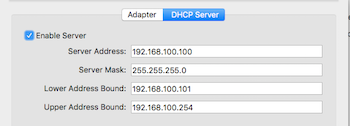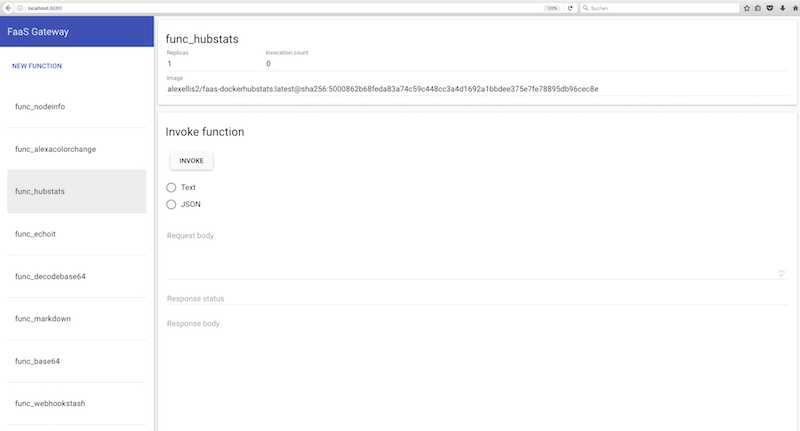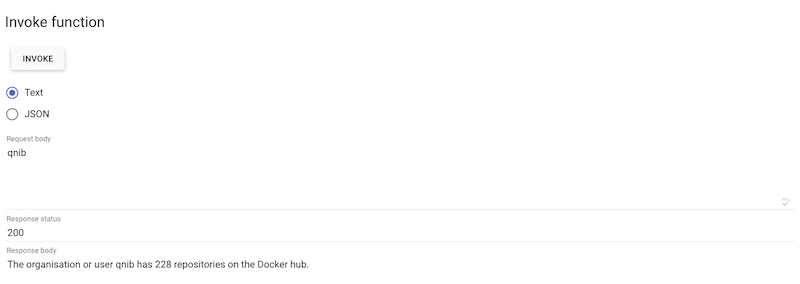M.E.L.I.G.: From VM to Unikernel and SOA to Serverless
During the latest MeetUp we talked about the rise of virtualization techniques and how software changed from clunky big services to state-less functions.
Slides & Videos
M.E.L.I.G. Unikernel and Serverless
Virtualization
While VMs and containers are all over the place I wanted to give an introduction to Unikernels. Which merges application code, libraries and the bits&pieces of the kernel needed into an 'application kernel'. One project to make use of it is Unik.
Setup UniK
To install it on macOS, the following steps have to be done, as described here: github.com/emc-advanced-dev/unik/blob/master/docs/install.md
git clone git@github.com:emc-advanced-dev/unik.git ~/src/github.com/emc-advanced-dev/unik
cd ~/src/github.com/emc-advanced-dev/unik
make
cp _build/unik /usr/local/bin
Afterwards open up VirtualBox and check on the vboxnet0 adapter (under Preferences).
 |
 |
 |
|---|
The unikernel will get IP addresses from the range of the DHCP server, the address of the adapter has to be in the same network as the range. Next up, configuration of the unik daemon:
$ mkdir $HOME/.unik
$ cat << \EOF > $HOME/.unik/daemon-config.yaml
providers:
virtualbox:
- name: my-vbox
adapter_type: host_only
adapter_name: vboxnet0
EOF
$
And start the daemon in one terminal window...
$ unik daemon
INFO[0000] daemon started config={Providers:{Aws:[] Gcloud:[] Vsphere:[] Virtualbox:[{Name:my-vbox AdapterName:vboxnet0 VirtualboxAdapterType:host_only}] Qemu:[] Photon:[] Xen:[] Openstack:[] Ukvm:[]} Version:}
*snip*
This compiles a little unikernel itself and starts it. After a little while we can open another tab and connect to the daemon.
$ unik target --host localhost
$ unik instances
INFO[0000] listing instances host=localhost:3000
NAME ID INFRASTRUCTURE CREATED IMAGE IPADDRESS STATE
VboxUnikInstanc 265604ea-40a6-4183-9 VIRTUALBOX 2017-03-23 15:45:04.317971783 VboxUnikInstanceList 192.168.100.101 running
Create First Unikernel
So far, so good, but let's create our own little unikernel following the little example: emc-advanced-dev/unik/blob/master/docs/getting_started.md
$ git clone git@github.com:qnib/unik-http.git ~/src/github.com/qnib/unik-http/
$ cd ~/src/github.com/qnib/unik-http/
$ unik build --name httpImage --path ./ --base rump --language go --provider virtualbox
INFO[0000] running unik build args= base=rump force=false host=localhost:3000 language=go mountPoints=[] name=httpImage path=./ provider=virtualbox
INFO[0000] App packaged as tarball: /var/folders/4x/s7z45gq93y5cq1cyccjbzw3h0000gn/T/sources.tar.gz.892223842
NAME ID INFRASTRUCTURE CREATED SIZE(MB) MOUNTPOINTS
httpImage httpImage VIRTUALBOX 2017-03-23 15:50:12.887106166 39
$
Now we start the unikernel...
$ unik run --instanceName httpInstance --imageName httpImage
INFO[0000] running unik run env=map[] host=localhost:3000 imageName=httpImage instanceName=httpInstance mounts=map[]
NAME ID INFRASTRUCTURE CREATED IMAGE IPADDRESS STATE
httpInstance 919ffb07-3788-4159-9 VIRTUALBOX 2017-03-23 15:59:57.960772954 httpImage pending
$ sleep 30 ; curl -s http://192.168.100.102:8080
my first unikernel!
Et voila...
Function-as-a-Service (FaaS)
The second outcome is somehow related, but not necessarily. Lately serverless, function-as-a-service caught my interest...
This new paradigm breaks down microservices into single functions, without the need of an actual service anymore - it's just the function which is scheduled and load-balanced by some framework. In the case of FaaS (github.com/alexellis/faas) Docker Services are used to scale up and a golang watchdog just schedules a binary over and over again.
Since it runs on SWARM, it's pretty hassle-free to set up:
$ git clone git@github.com:alexellis/faas.git ~/src/github.com/alexellis/faas/
Cloning into '/Users/kniepbert/src/github.com/alexellis/faas'...
remote: Counting objects: 997, done.
remote: Compressing objects: 100% (139/139), done.
remote: Total 997 (delta 66), reused 0 (delta 0), pack-reused 853
Receiving objects: 100% (997/997), 1.55 MiB | 1.24 MiB/s, done.
Resolving deltas: 100% (515/515), done.
Checking connectivity... done.
$ ./deploy_stack.sh
Deploying stack
Creating service func_hubstats
Creating service func_alertmanager
Creating service func_wordcount
Creating service func_gateway
Creating service func_alexacolorchange
Creating service func_nodeinfo
Creating service func_echoit
Creating service func_base64
Creating service func_markdown
Creating service func_prometheus
Creating service func_decodebase64
Creating service func_webhookstash
$
This creates a bunch of exemplary functions (as docker services). Once every docker image is downloaded and started...
$ docker service ls
ID NAME MODE REPLICAS IMAGE
25m7f8sz72fl func_prometheus replicated 1/1 quay.io/prometheus/prometheus:latest
2wev4d40mfxp func_nodeinfo replicated 1/1 alexellis2/faas-nodeinfo:latest
749jiszgx2t2 func_gateway replicated 1/1 alexellis2/faas-gateway:latest
7subbjju3oc2 func_alexacolorchange replicated 1/1 alexellis2/faas-alexachangecolorintent:latest
atqkvvfm6ek5 func_hubstats replicated 1/1 alexellis2/faas-dockerhubstats:latest
lwp6xe4s8z76 func_echoit replicated 1/1 alexellis2/faas-alpinefunction:latest
m9dxiljg51mf func_decodebase64 replicated 1/1 alexellis2/faas-alpinefunction:latest
n5bnq69ffxdf func_markdown replicated 1/1 alexellis2/faas-markdownrender:latest
ptm6wfn2roov func_base64 replicated 1/1 alexellis2/faas-alpinefunction:latest
qtsom1nqqpl8 func_webhookstash replicated 1/1 alexellis2/faas-webhookstash:latest
tyeeksxdyxpq func_alertmanager replicated 1/1 quay.io/prometheus/alertmanager:latest
xgv1gpso6fot func_wordcount replicated 1/1 alexellis2/faas-alpinefunction:latest
$
... it is time to check it out. Open the dashboard (localhost:8080).
A function can be invoked via the WebUI.
Or using the bash...
$ curl --data qnib http://localhost:8080/function/func_hubstats
The organisation or user qnib has 228 repositories on the Docker hub.
$
What I dislike here is that the containers are not trashed and rescheduled after use.
Fission (FaaS for Kubernetes)
I am not that much of a Kubernetes guy, but I have to admit that the fission project might convince me otherwise.
Install Minikube
Not unlike OpenStack, when I first encountered kubernetes it was hard to set it up locally. And on a normal host there were a lot of moving parts to consider. This times are gone, welcome minikube...
curl -sLO https://storage.googleapis.com/kubernetes-release/release/$(curl -s https://storage.googleapis.com/kubernetes-release/release/stable.txt)/bin/darwin/amd64/kubectl
chmod +x kubectl
mv kubectl /usr/local/bin
curl -Lo minikube https://storage.googleapis.com/minikube/releases/v0.17.1/minikube-darwin-amd64
chmod +x minikube
mv minikube /usr/local/bin/
Deploy Fission
$ minikube start
Starting local Kubernetes cluster...
Starting VM...
Downloading Minikube ISO
89.24 MB / 89.24 MB [==============================================] 100.00% 0s
SSH-ing files into VM...
Setting up certs...
Starting cluster components...
Connecting to cluster...
Setting up kubeconfig...
Kubectl is now configured to use the cluster.
$ kubectl create -f http://fission.io/fission.yaml
namespace "fission" created
namespace "fission-function" created
deployment "controller" created
deployment "router" created
service "poolmgr" created
deployment "poolmgr" created
deployment "kubewatcher" created
service "etcd" created
deployment "etcd" created
$ kubectl create -f http://fission.io/fission-nodeport.yaml
service "router" created
service "controller" created
$ export FISSION_URL=http://$(minikube ip):31313
$ export FISSION_ROUTER=$(minikube ip):31314
$ curl -s http://fission.io/mac/fission > fission
$ chmod +x fission
$ mv fission /usr/local/bin/
Create example
Let us go through the little example...
$ fission env create --name nodejs --image fission/node-env
$ cat << \EOF > hello.js
module.exports = async function(context) {
return {
status: 200,
body: 'Your body here\n'
};
}
EOF
$ fission function create --name hellojs --env nodejs --code hello.js
$ fission route create --method GET --url /hellojs --function hellojs
$ curl http://$FISSION_ROUTER/hellojs
Your body here
$
Spin up Kubernetes
$ git clone https://github.com/marselester/prometheus-on-kubernetes.git ~/src/github.com/marselester/prometheus-on-kubernetes
Cloning into '/Users/kniepbert/src/github.com/marselester/prometheus-on-kubernetes'...
remote: Counting objects: 56, done.
remote: Total 56 (delta 0), reused 0 (delta 0), pack-reused 56
Unpacking objects: 100% (56/56), done.
Checking connectivity... done.
$ cd ~/src/github.com/marselester/prometheus-on-kubernetes
$ kubectl create -f kube/prometheus/deployment-v1.yml
deployment "prometheus-deployment" created
$ kubectl expose deployment prometheus-deployment --type=NodePort --name=prometheus-service
service "prometheus-service" exposed
$ kubectl describe service prometheus-service
Name: prometheus-service
Namespace: default
Labels: app=prometheus-server
Selector: app=prometheus-server
Type: NodePort
IP: 10.0.0.102
Port: <unset> 9090/TCP
NodePort: <unset> 32241/TCP
Endpoints: 172.17.0.12:9090
Session Affinity: None
No events.
$ open http://$(minikube ip):32241
Conclusion
This new approaches starting to boggle my mind.
We had a nice discussion about what one might gain and my argument was:
Optimize Mixed Workloads
When a heterogenous workload is what your users are putting upon your shoulders (like AWS experiences), functions can help fill the unused gaps and provide more utilization.
Iteration Speed and Reproducibility
As the function is stateless, it can be updated on the spot, without the need for an actual update-path. And each execution is completely the same - without any side-effects.
So far... thanks everyone for attending - always a pleasure...

